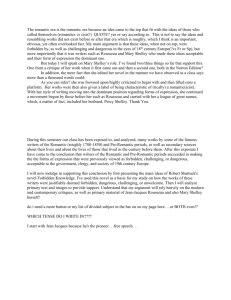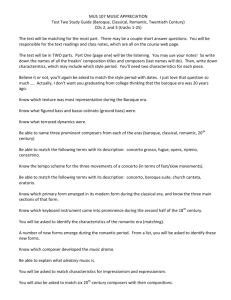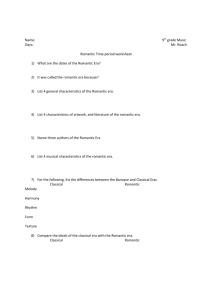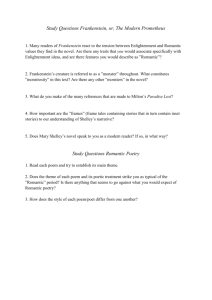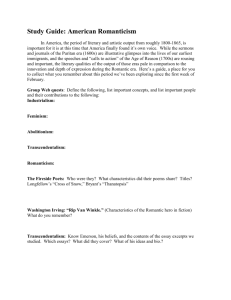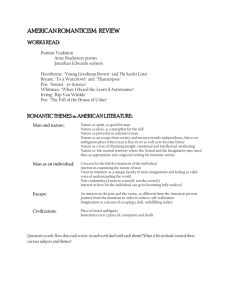Romantic Literature and Its Neoclassic Predecessors (from the Age
advertisement
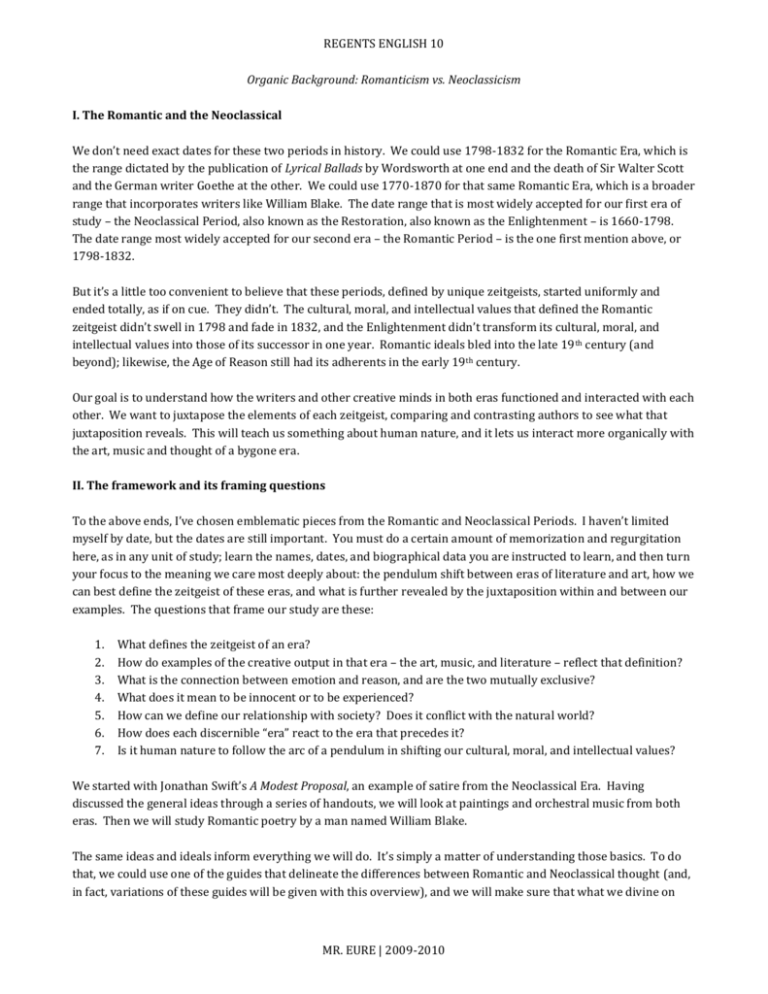
REGENTS ENGLISH 10 Organic Background: Romanticism vs. Neoclassicism I. The Romantic and the Neoclassical We don’t need exact dates for these two periods in history. We could use 1798-1832 for the Romantic Era, which is the range dictated by the publication of Lyrical Ballads by Wordsworth at one end and the death of Sir Walter Scott and the German writer Goethe at the other. We could use 1770-1870 for that same Romantic Era, which is a broader range that incorporates writers like William Blake. The date range that is most widely accepted for our first era of study – the Neoclassical Period, also known as the Restoration, also known as the Enlightenment – is 1660-1798. The date range most widely accepted for our second era – the Romantic Period – is the one first mention above, or 1798-1832. But it’s a little too convenient to believe that these periods, defined by unique zeitgeists, started uniformly and ended totally, as if on cue. They didn’t. The cultural, moral, and intellectual values that defined the Romantic zeitgeist didn’t swell in 1798 and fade in 1832, and the Enlightenment didn’t transform its cultural, moral, and intellectual values into those of its successor in one year. Romantic ideals bled into the late 19 th century (and beyond); likewise, the Age of Reason still had its adherents in the early 19th century. Our goal is to understand how the writers and other creative minds in both eras functioned and interacted with each other. We want to juxtapose the elements of each zeitgeist, comparing and contrasting authors to see what that juxtaposition reveals. This will teach us something about human nature, and it lets us interact more organically with the art, music and thought of a bygone era. II. The framework and its framing questions To the above ends, I’ve chosen emblematic pieces from the Romantic and Neoclassical Periods. I haven’t limited myself by date, but the dates are still important. You must do a certain amount of memorization and regurgitation here, as in any unit of study; learn the names, dates, and biographical data you are instructed to learn, and then turn your focus to the meaning we care most deeply about: the pendulum shift between eras of literature and art, how we can best define the zeitgeist of these eras, and what is further revealed by the juxtaposition within and between our examples. The questions that frame our study are these: 1. 2. 3. 4. 5. 6. 7. What defines the zeitgeist of an era? How do examples of the creative output in that era – the art, music, and literature – reflect that definition? What is the connection between emotion and reason, and are the two mutually exclusive? What does it mean to be innocent or to be experienced? How can we define our relationship with society? Does it conflict with the natural world? How does each discernible “era” react to the era that precedes it? Is it human nature to follow the arc of a pendulum in shifting our cultural, moral, and intellectual values? We started with Jonathan Swift’s A Modest Proposal, an example of satire from the Neoclassical Era. Having discussed the general ideas through a series of handouts, we will look at paintings and orchestral music from both eras. Then we will study Romantic poetry by a man named William Blake. The same ideas and ideals inform everything we will do. It’s simply a matter of understanding those basics. To do that, we could use one of the guides that delineate the differences between Romantic and Neoclassical thought (and, in fact, variations of these guides will be given with this overview), and we will make sure that what we divine on MR. EURE | 2009-2010 REGENTS ENGLISH 10 our own roughly matches what others have gleaned from juxtaposing these two eras. There’s no substitute, however, for figuring it out ourselves, and that means that we follow these steps: 1. 2. 3. 4. Observe and record specific details Extrapolate patterns and identify useful meanings (e.g., contrasting themes, shifting beliefs) Explore conclusions regarding the zeitgeist of the era Identify and explicate juxtaposition within and between the texts The first two steps happen at once, most of the time, but the list of details is critical. As you look at a painting, you make notes on every detail you see; as you look at the next, you make notes in the same way, noticing how the patterns contrast and compare. When you read Romantic poetry, you will contrast it with Swift’s essay using the same process. III. Adversarial To help us focus, you will sit in your rows and participate in a lecture-based adversarial. We will start with a review of important terms and concepts (e.g., pendulum shifts and zeitgeists) and move into an organic study of the Romantic and Neoclassical styles of art and music. Once we understand more clearly the cultural, intellectual, and moral values we have in front of us, we will begin our specific study of Romantic literature. First, however, we will nail down the skill of using and analyzing juxtaposition by watching a Terry Tate commercial. After that, we’ll segue into William Blake’s Songs of Innocence and Experience, in order to explore how a few aspects of the Romantic zeitgeist were expressed. MR. EURE | 2009-2010

